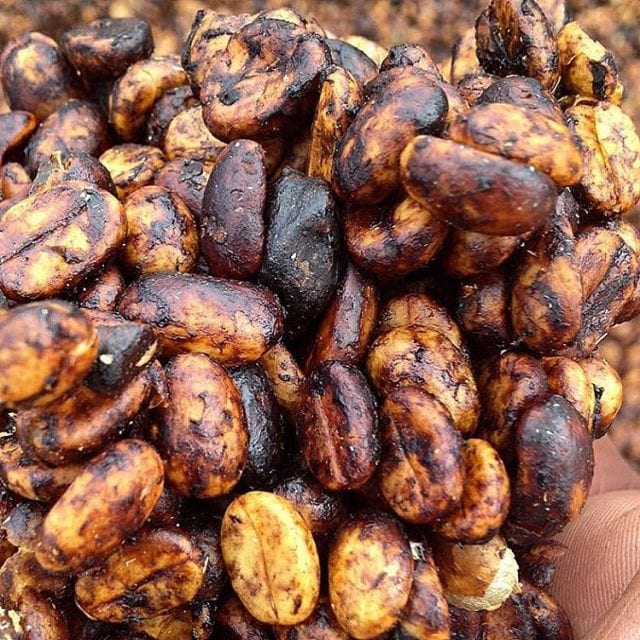I came across something new to me a few weeks ago. "Black Honey" coffee. It's a phrase I haven't heard before, so naturally I had to do a little research on it.
The beans are a "true" specialty coffee. The green beans have sweet, fruity undertones, and a balanced acidity. The depth of the bean depends on which honey process is used. Let's back up a step. What is a honey process?
To answer that question, let's take a look at how coffee is processed. If you didn't already know, the coffee bean is essentially the pit/seed of a cherry that grows on trees. In order to get to the coffee, you have to remove the "meat" of the cherry to get to the bean.
- Natural or Dried
- This method, coffee is picked off the tree and laid in the sun to dry. This method can take up to 4 weeks and can be trucky to ensure no moldy or other off flavors get into the beans. It works well in very dry climates like Ethiopia and Brazil. This method keeps many fruit flavors in the bean. The pulp is then removed mechanically in a method called dry milling.
- Washed
- This method the skin of the cherry is removed mechanically with water. Then the beans are put into fermentation tanks until the micilage (meat) is no longer sticky. This method takes anywhere from 12 hours through 6 days. The mucilage is then just washed off with water.
- Honey Process
- This process is becoming very popular, especially in Costa Rica. The mucilage of cherry is typically very sticky and slimy, and is sometimes refered to as "honey". During the Honey Process, coffee is dried with some or even all of the mucilage remaining on the bean. The cherries are picked, sorted, depulped, and then moved to drying beds for a period of time. Since there is a small amount of time it takes for the mucilage to dry, coffee that is processed this way features significantly less acidity than washed or natural methods.
So now we know how the honey process stacks up to other methods, while the beans are dried with the mucilage, you can also control how much light gets exposed to the bean. Yellow, Red, and Black are the different levels of the honey method.
Yellow honey is exposed to the most light, and therefore is exposed to more heat. This is the fasted honey method. Red honey is typically dried for up to a week, usually on overcast days or even in the shade. Farmers will typically cover the beans if it's sunny outside. The black honey method gets the most shelter from the light & heat. It takes the longest amount of time to dry, up to 2 weeks. It's the most labor intesive (expensive) way to process the coffee. What you're left with is the most mucilage left on the bean while it dries.
The black honey method provides the most natural flavor from the cherry while also having the least amount of acidity in the cup. The beans are typically harder to roast and just a few degrees over roasting can drastically change the flavor.
So when I saw Costa Rican Black Honey, I just had to try it, and after a few test roasts, I have the flavor dialed in, and my god it's delicious. Bright and fruity. Delicious, and I just kept going back to the cup.
I hope you were able to learn something new, along with me by reading this!


